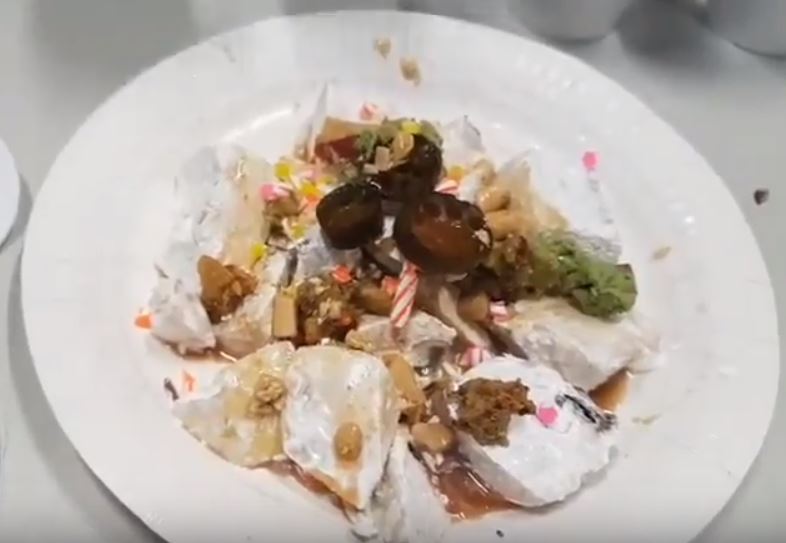Staff: QUICK, THE CUSTOMER IS STARVING! WE NEED TO MAKE A DISH ASAP!
Chef: OKAY, BUT FIRST THING’S FIRST… ANyone knows the recipe?
Staff: …
Chefs: …
*everyone turns to face audience*
Everyone: HALP US
And with that, we being the journey with our clueless chefs and their kitchen staff as they rush against time to create a NEW Dish for their valued (and hungry as hell) customer. However, not knowing the recipe, they seek the help of the audience, asking them to suggest ingredients, both edible and inedible. After that, the audience get to lend a helping hand in the kitchen.
Wait, let me rephrase that. The audience lends their help by controlling the chefs’ hands.
Through the use of Facebook live, we were able to create a third-space where the audience could meet the chefs and give instructions live and directly to them through their comments. Aside from creating a (kitchen) space online, we were also participating in a do-it-with-others (DIWO) via live interaction, with both the audience and artists (or chefs) working together to create a NEW Dish.
As a member of this DIWO project, I took on the role of one of the chefs, and it was quite a hands-on experience. Playing a chef, I had to either listen out for Celine when she read out the instructions or read directly from the comments myself. The latter proved to be tougher as we progressed with our little cooking session, mainly because we were busy focusing on the tasks at hand. I was also initially worried that there would be a lack of interaction from the audience, but the comment section was flooded with plenty of creative instructions. Too much so, and we ended up missing quite a few of them. This was also partially due to the lag that comes with streaming the video live.
I also tried to stay in character; I wasn’t a student, but a chef, and I made sure to engage with the audience as such. I would rush them to give instructions, since our dear customer was waiting, and at the same time comment on things from a chef’s point of view. I also encouraged the audience by complimenting on their ingenuity. For instance, filling a condom with wasabi and chili-flake covered apples, and then pipping it onto the pear salad as garnish. Pure culinary genius.
Nonetheless, us chefs were able to execute the instructions well; after getting out hands dirty and conducting many regretful smell tests along the way, we were able to create a NEW dish that looked Good Enough to Eat.
Bone apple feet, everyone!
Group members: Celine, Azizah, Hazel, Tanya, Karen







